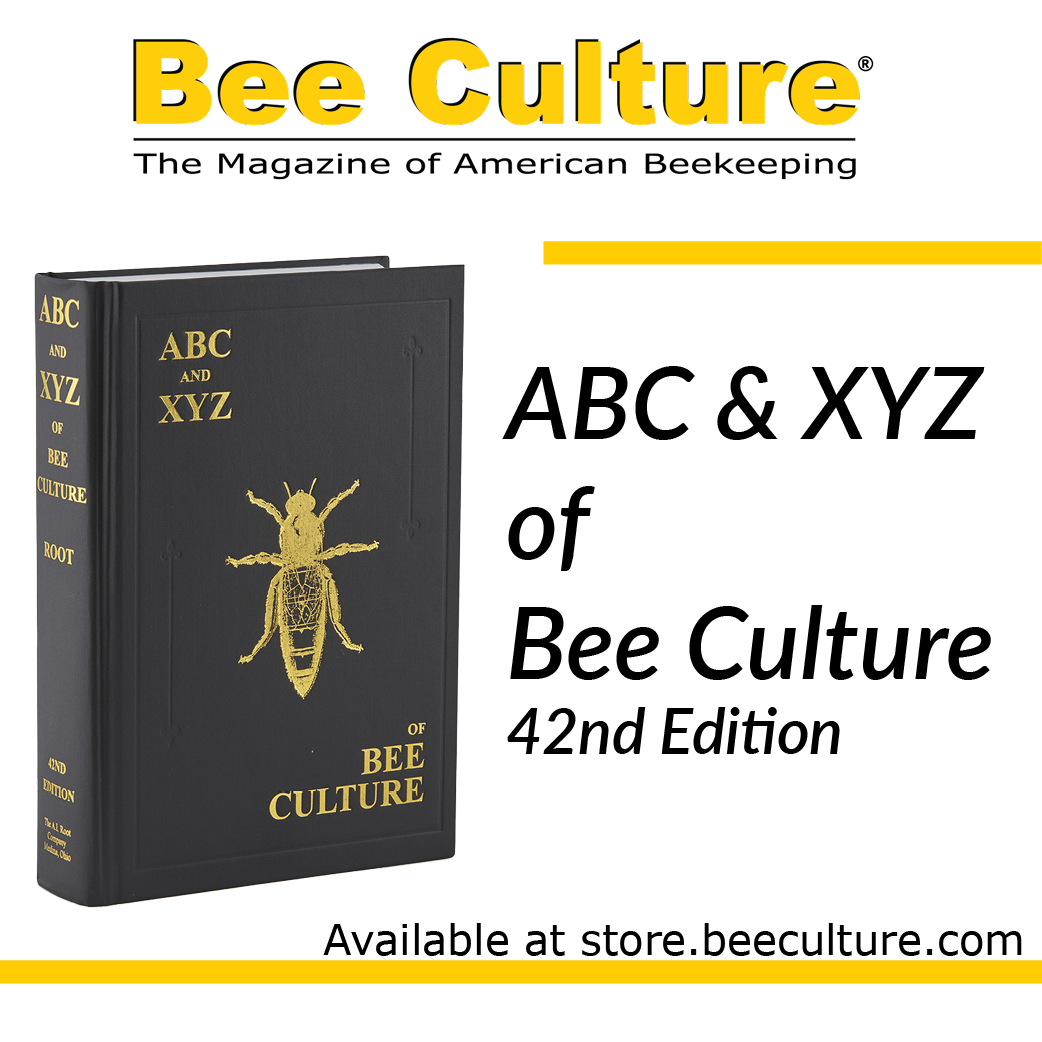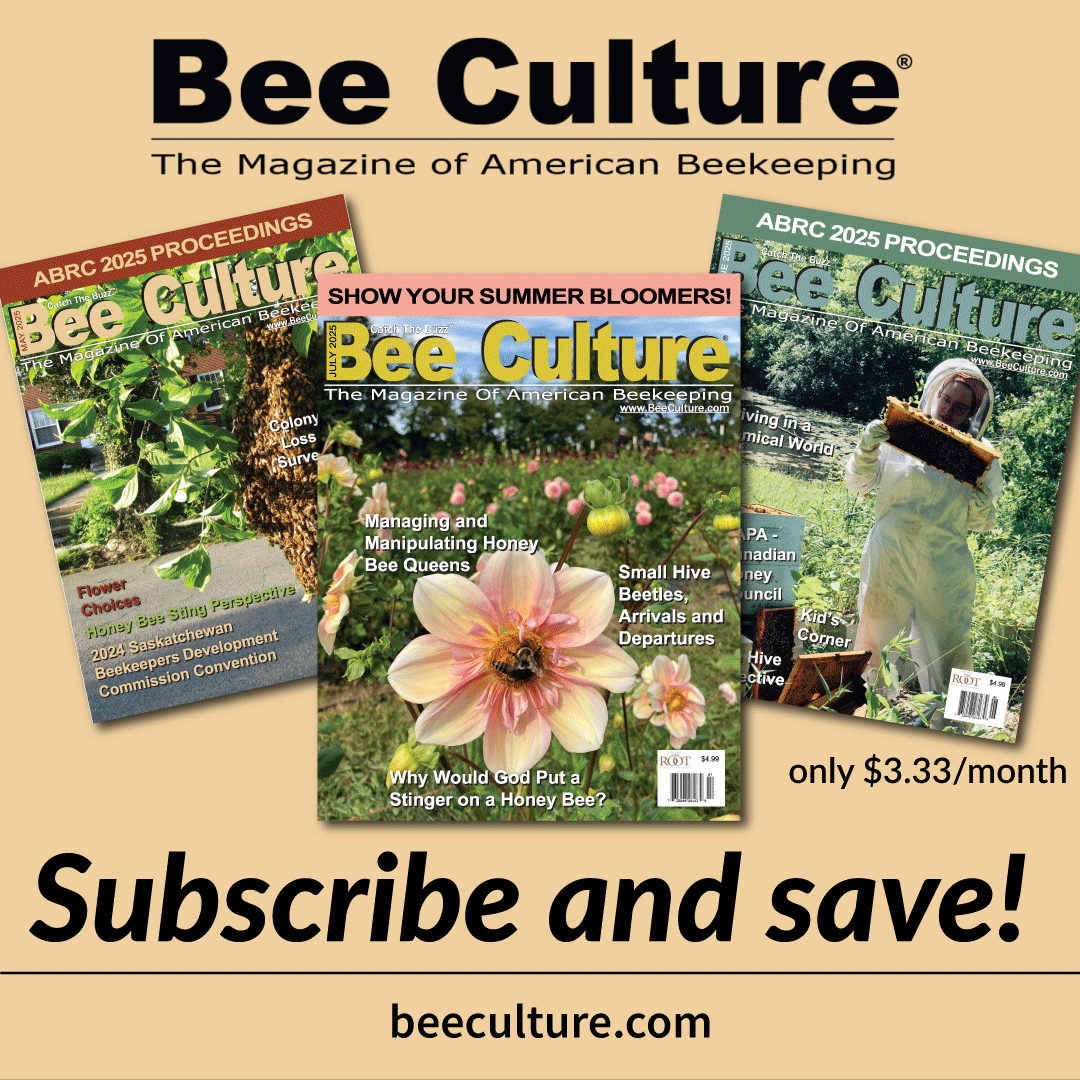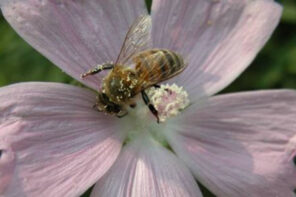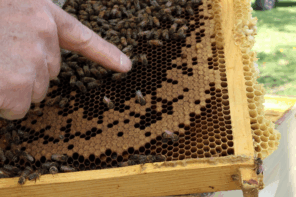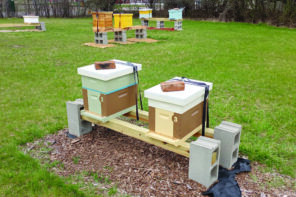By: Ross Conrad
This article originally appeared in the Autumn 2017 issue of BEEKeeping Your First Three Years
When is the right time for you?
In much of the Northeast, the bees have typically stored honey in great quantities by the end of July. Thus the dilemma: to harvest honey now, or wait? Many beekeepers in Southern and Western states enjoy more than one honey harvest a year, but in the Northeast, most beekeepers don’t have such luxuries. Let’s explore some of the numerous benefits and drawback to harvesting at different times during the season.
Benefits of the Early Harvest
Harvesting honey early in the season while there are still many weeks or even months of nectar gathering to go, can allow the beekeeper to reap some special benefits. Top among them is the ability to harvest honey varietals. Blueberry, Orange Blossom, Buckwheat and others honeys are only possible when the honey is harvested immediately following the major bloom and before the bees have the chance to forage on a different crop. Honey varietals can be delicious, highly sought after and command a premium price. In many parts of the Northeast, harvesting late in July or early August will yield a honey that is primarily composed of the nectar from clover and alfalfa blossoms. Such honey is exceptionally light in color and flavor. Since the honey was harvested prior to the goldenrod bloom, it will tend to take a long time to crystallize, even when the honey is not heated at all during the extraction and bottling process.
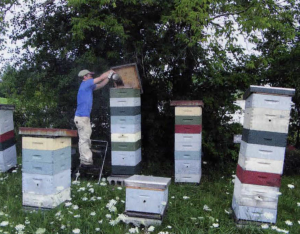
Lots of honey on the hives creates a good problem to have, whether to take the honey off and extract it now, or wait until later in the season?
An early harvest can also provide the beekeeper with a marketing edge by allowing them to be the first to offer local honey harvested in the current season. Such a benefit is especially helpful to beekeepers seeking to overcome intense competition in areas with many other beekeepers, or when trying to break into a new market.
The early harvest allows plenty of time to treat before colonies begin the process of raising the all important Winter bees that will carry the hive through the Winter season. This is important because most commercially available treatments to control mites are not approved for use when honey supers are on the hive. It may be helpful at times to break the work of harvesting and extracting up so that there is not so much work to do all at once at the end of the season.
Drawbacks of the Early Harvest
The biggest problem with taking honey early is that it can make it difficult to accurately predict how much honey to take and how much to leave in order for the colony to survive Winter. While it is possible to harvest early and still have the bees collect enough honey during the remainder of the season in order to have plenty stored for Winter, it is also possible that the rest of the season will be a bust requiring that all your hives will need to be fed a lot of syrup to make up for the honey that was taken earlier in the season.
If there is a strong flow late into the year and honey will be harvested both early and later in the season, there is the issue of the extra work required to clean and set up the extracting equipment not once, but twice during the year. Given the extra work involved, it is important to make sure that the price you are getting for that varietal honey is worth it.
The Benefits of the Late Season Harvest
The big benefit of waiting until the very end of the honey season before harvesting and extracting your honey crop is the ability to accurately gauge how much honey is excess that can be safely harvested, and how much should be left on the hive for the colony to overwinter on. Sure you can get a lot more money for your honey than it will cost to purchase sugar for syrup, but when factoring in not only the cost of purchasing sugar, but the time and labor involved in mixing up the syrup, feeding the bees and then cleaning the feeders afterward, the benefits of leaving honey on the hive become more apparent.
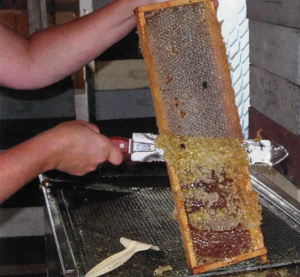
Given all the work involved with setting up, extracting, and then cleaning up, beekeepers with Langstroth-style hives will often wait until the end of the season and harvest and extract all at one time. Alternatively, top bar beekeepers may have to harvest a few frames from each hive every couple of weeks in order to keep their colonies from becoming overcrowded.
Then there is the recent study published in the Proceedings of the National Academy of Sciences (Mao, Schuler and Berenbaum) that discovered that substances found in pollen, such as p-coumaric acid, turns on the honey bee’s detoxification genes, as well as some of the bee’s antimicrobial peptide genes. Since small amounts of pollen naturally get into the honey during the colony’s process of collecting nectar and converting it into honey, the consumption of honey is far better for a hive’s health than sugar substitutes. In effect, the researchers found that honey may act like a neutraceutical helping to regulate the honey bee’s immune and detoxification processes. The benefits of pollen-laced honey in tpe diet are especially important for hives that are exposed to toxic chemicals and pollutants. The researchers report that when p-coumaric acid is added to a diet of sucrose, it greatly increased the honey bee’s ability to metabolize and detoxify coumaphos, the active ingredient found in the varroa mite treatment Checkmite+. These findings may help explain why the artificial diet that so many hives must contend with these days has been linked to the nutritional stress that is one of the factors correlated with the dramatic increase in colony loss experienced in the U.S. during the past six years. Even if you are mixing pollen into your sugar syrup, I suspect that it is better to harvest late and leave plenty of honey on the hive, than to harvest early and have to feed colonies honey substitutes.
The Drawbacks of the Late Season Harvest
A big problem with harvesting honey late in the season is that the honey becomes difficult to harvest. Since nectar sources are drying up late in the year, robbing is rampant among the hives and clouds of robbing bees can make the process of harvesting honey a miserable chore. In the Northeast, temperatures are falling significantly late September and October and this makes the job of extracting more difficult since cold honey becomes thick and does not flow as readily as warm honey. This will make the job of extracting combs more time and energy intensive. Some beekeepers let honey supers sit in a warm room for a couple days and allow the honey to warm up before beginning the process of extracting.
A late harvest can also be the death-knell for colonies that have high levels of Varroa mite infestation. As mentioned above, if colonies are not being managed in a way that keeps mite levels low throughout the year, hives must be treated early enough in late Summer or early Autumn in order to become healthy enough to raise healthy Winter bees so the hive will have a good chance of surviving Winter.
Just Right …
The right time to harvest your honey will depend on many factors including geographic location, climate, and preferred mite control methods. If you are producing comb honey in the Northeast for example, July is a great time to harvest those comb honey supers, before the bees have the chance to track up the cappings of the comb honey with travel stains.
When producing liquid honey, it is ideal if one can wait until it is possible to determine how much, if any, excess honey is on the hive that can be harvested safely while still leaving plenty to see the colony through Winter. Timing should be early enough in the season that any mite treatments that may be needed can be successfully applied well before Winter weather sets in, and early enough that for hives that do not have enough Winter stores, there is still plenty of warm weather left to feed colonies if necessary and allow them to evaporate the moisture from the syrup before Winter. And the right time will be before all the forage in the area dries up causing the bees to start robbing in earnest and cold temperatures lead to making the honey harvest and extraction more difficult than need be. Your timing must balance with the desire to harvest the maximum amount of honey possible and any specific varieties of honey you hope to obtain, with everything else we have going on in our lives. The right time to harvest the honey crop is similar to the right way of managing our hives in that it will be different for each of us and it will be different from year to year, especially as the climate continues to shift and become less predictable.



